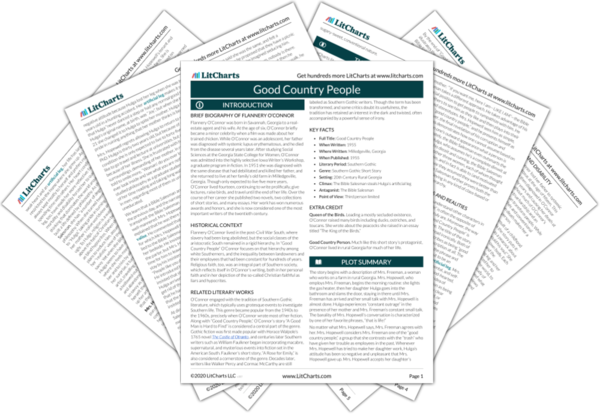Next
Summary
Good Country People Study Guide |
Next
Summary
|
Welcome to the LitCharts study guide on Flannery O’Connor's Good Country People. Created by the original team behind SparkNotes, LitCharts are the world's best literature guides.

Queen of the Birds. Leading a mostly secluded existence, O’Connor raised many birds including ducks, ostriches, and toucans. She wrote about the peacocks she raised in an essay titled “The King of the Birds.”
Good Country Person. Much like this short story’s protagonist, O’Connor lived in rural Georgia for much of her life.